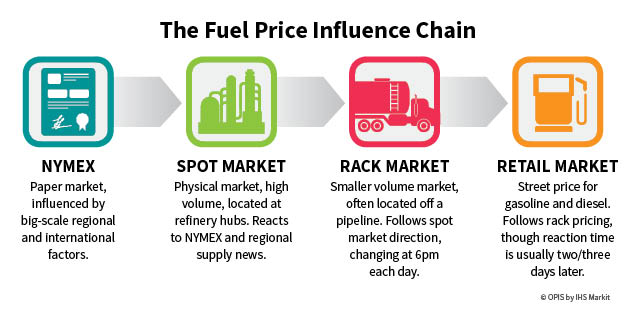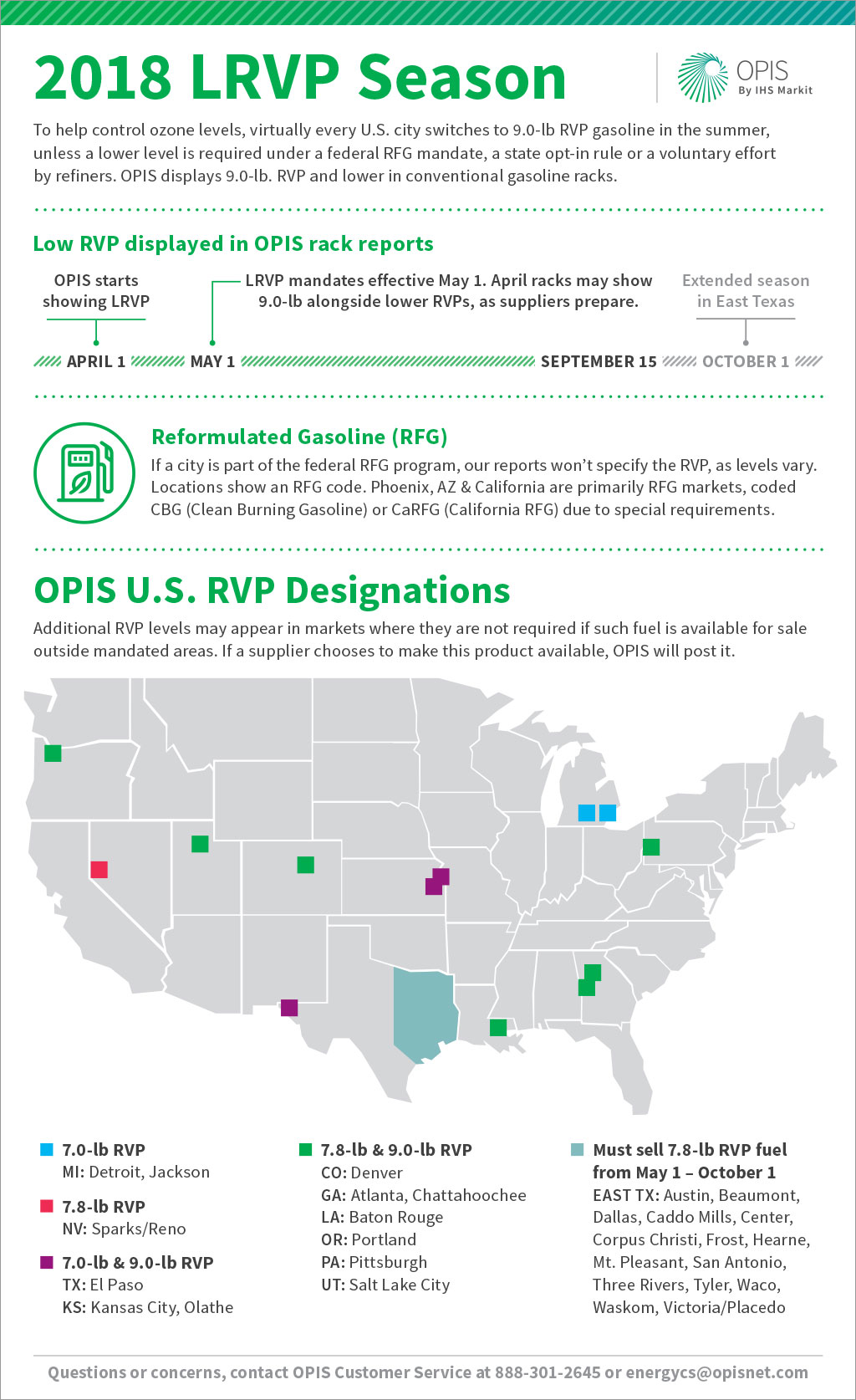Gasoline Price Volatility and the Spring RVP Transition
Spring has sprung – Nor’easters blanketing a huge swath of the United States in snow notwithstanding – but the gasoline market has been looking forward to summer for quite some time now.
Starting as early as February this year, the spot markets started their annual transition away from winter-spec gasoline to summer-spec grades. The racks will be next.
What do we mean by that? We mean RVP levels. RVP, or Reid Vapor Pressure, measures gasoline pressure and is mandated to specific levels by state and local governments as an ozone-control mechanism.
In warmer months, RVP levels must be lower than when it’s cold outside. In late winter/early spring each year, U.S. spot gasoline markets start to ramp down RVP with the chain reaction rippling to the racks.
The spot market starts the RVP transition, so that the proper grades can be loaded from refinery hubs into pipelines and supply the United States’ extensive network of wholesale fuel racks. For example, the main grade to measure gasoline values in the U.S. Gulf Coast just recently changed to the 9.0-lb. summer-grade RVP spec.
Low RVP designations then start to appear in OPIS rack reports as of April 1, as suppliers prepare for May 1, when low RVP levels must be in place.
Here’s why it’s important to stay on top of RVP: gasoline price volatility
As 9.0-lb RVP trading took center stage, spot Gulf Coast spot gasoline prices climbed more than a dime in the course of a week, pushing prices to their highest point in March 2018. RVP season tends to keep gasoline on its toes, so to speak. It’s not uncommon to see double-digit price bounces.
Now, remember our price influence chain.
Refiners increase or decrease their daily rack costs based on the average daily change in their spot replacement cost, a value they calculate based on changes in the spot market. So, a 10ct change in the spot market based on RVP changes will be felt at the racks.
Below is a handy infographic to help you keep track of how OPIS handles RVP at the rack, with a map to help you stay on top of key regions.
The market will, of course, transition up again in the fall. And you’ll be able to keep track of all the changes in your OPIS Rack Report. If you aren’t already subscribed to OPIS Racks, click below for a free demo.


